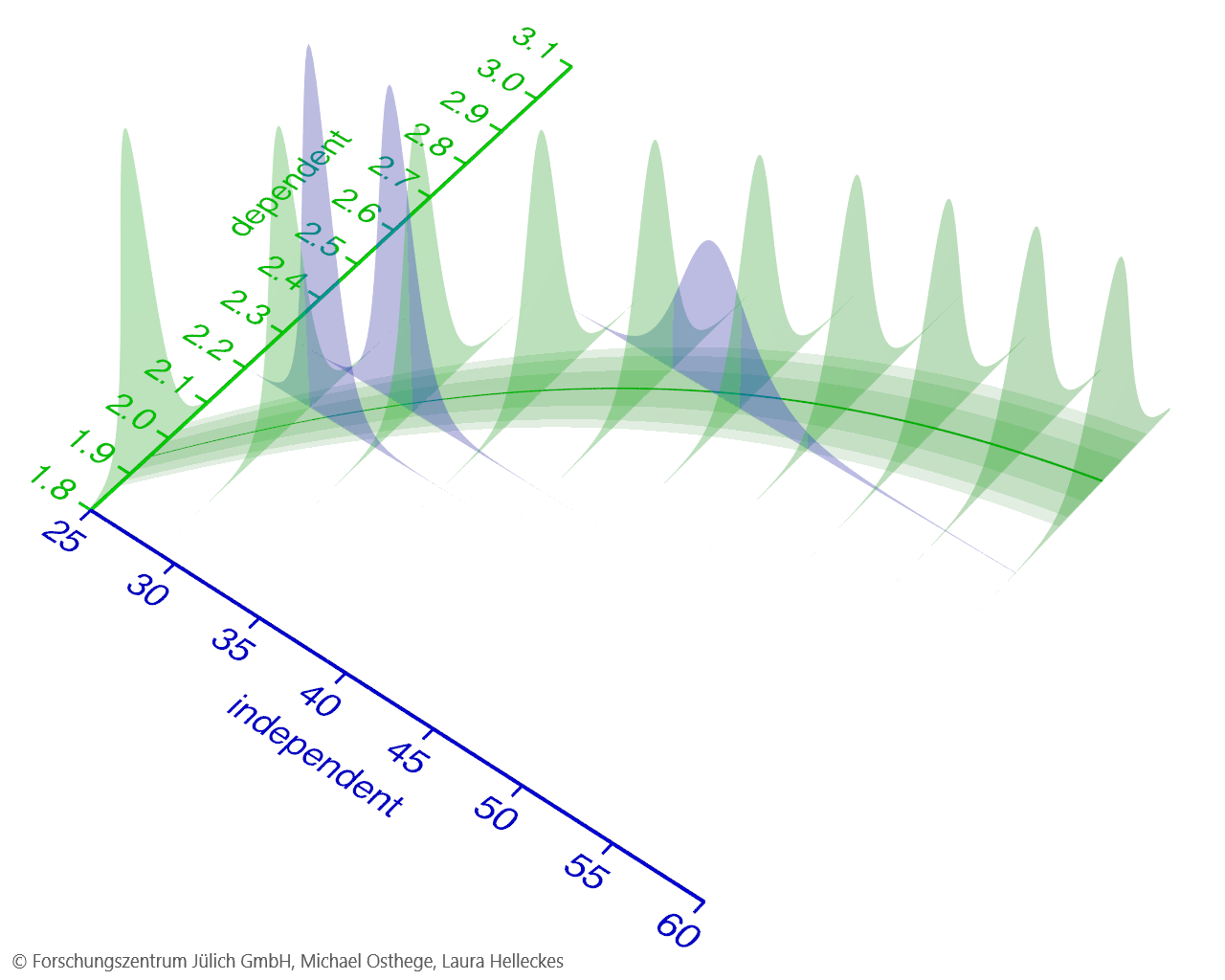1. Terminology
The International Bureau of Weights and Measures (BIPM) defines as calibration as:
[A procedure that] establishes a relation between the quantity values […] provided by measurement standards and the corresponding indications with associated measurement uncertainties […].
Mathematically, the two quantities are often referred to as independent and dependent variable. In a second step, the relation between the two can be used to obtain quantity values of the independent variable from the indications.

We use the term calibration model to describe the relationship between independent and dependent variable in a data-generating process. The underlying assumption is that for each quantity value of the independent variable, we can describe a probability distribution over the dependent variable and its measurement uncertainties. The parameters of the calibration model describe how this probability distribution changes in dependence on the independent variable.
With calibr8, we provide a Python package to effortlessly construct and apply calibration models independent of the application domain.
On the following pages, you can read about the concepts of calibr8 and learn how to build your own calibration models.